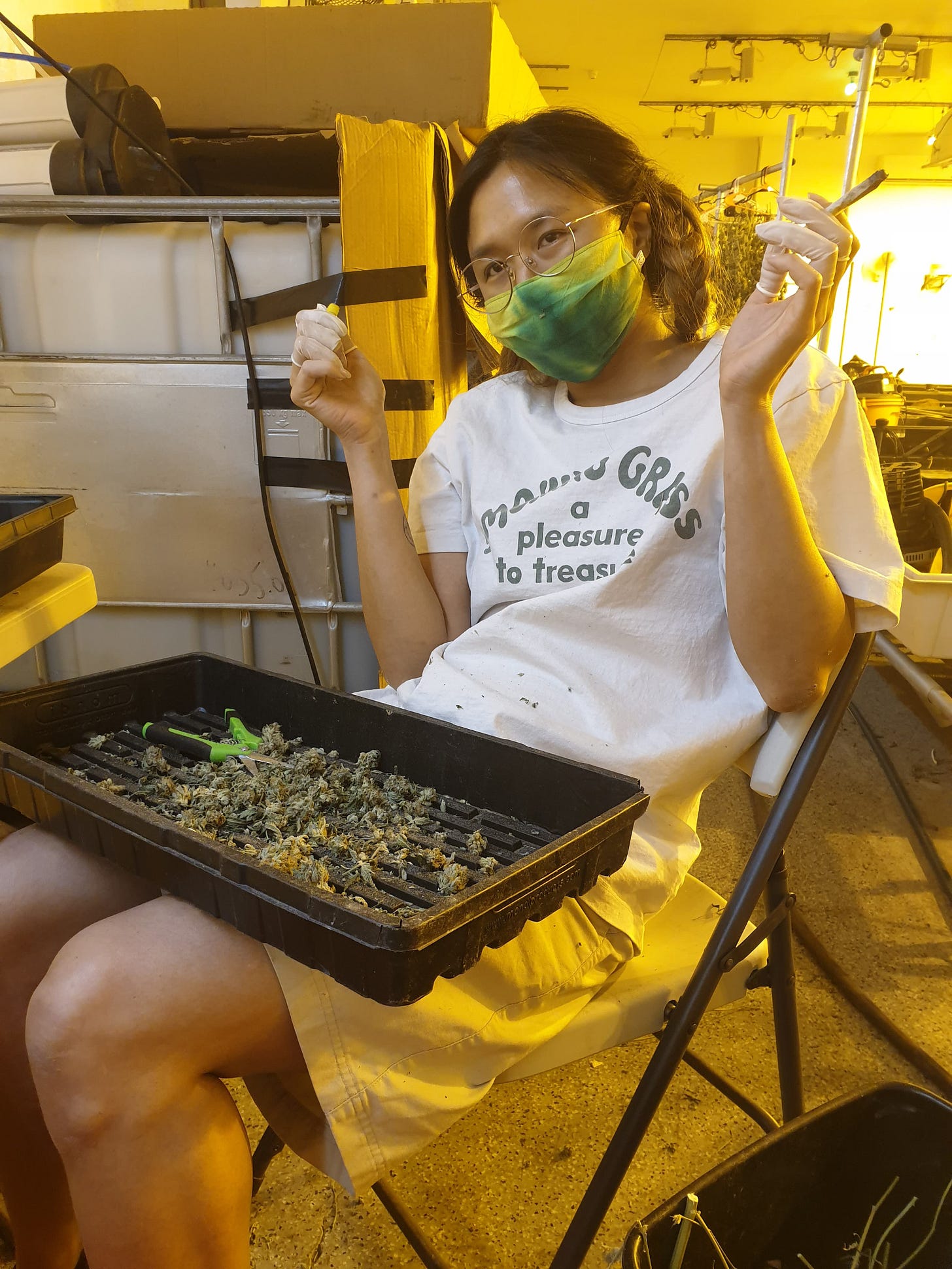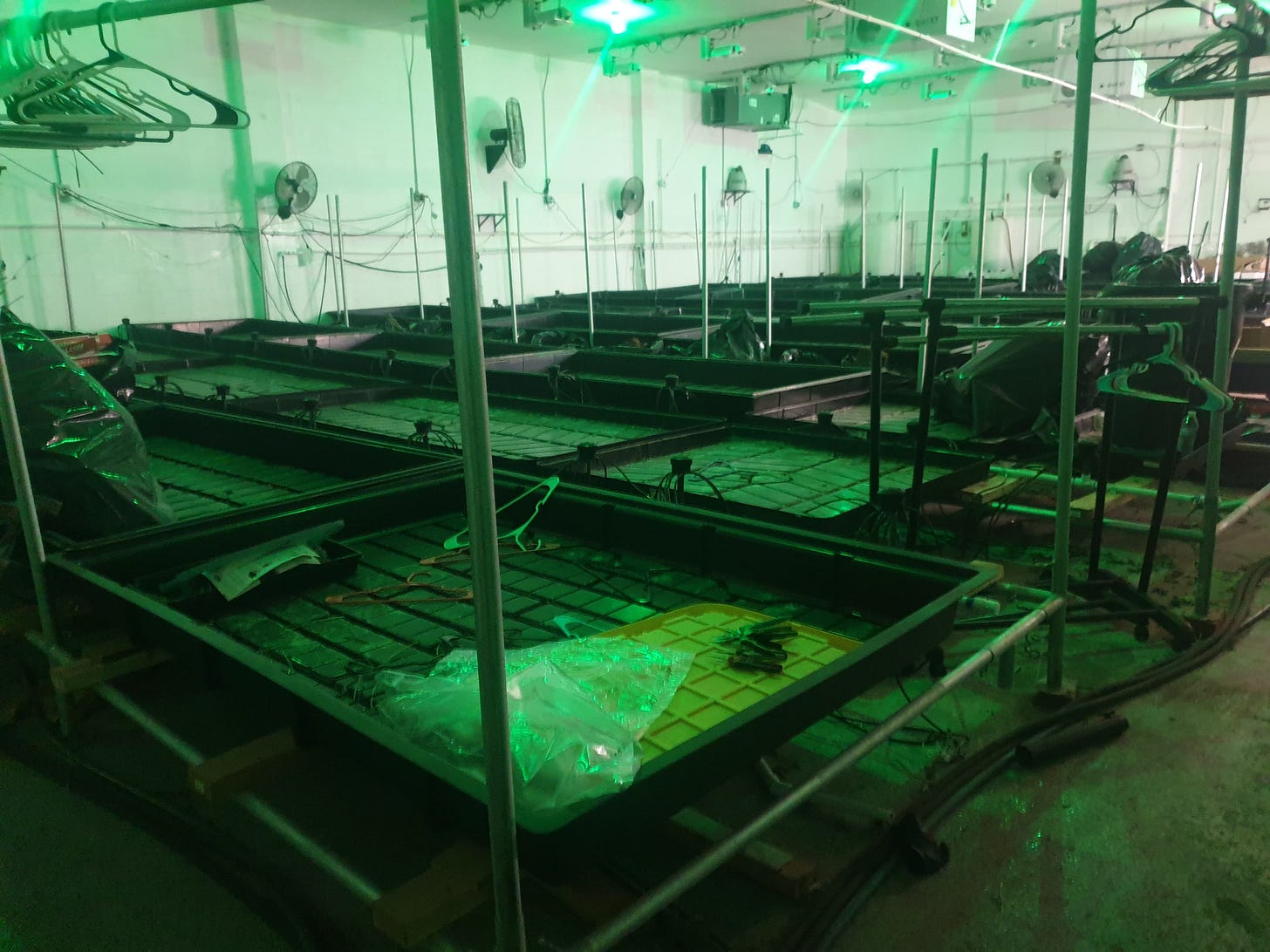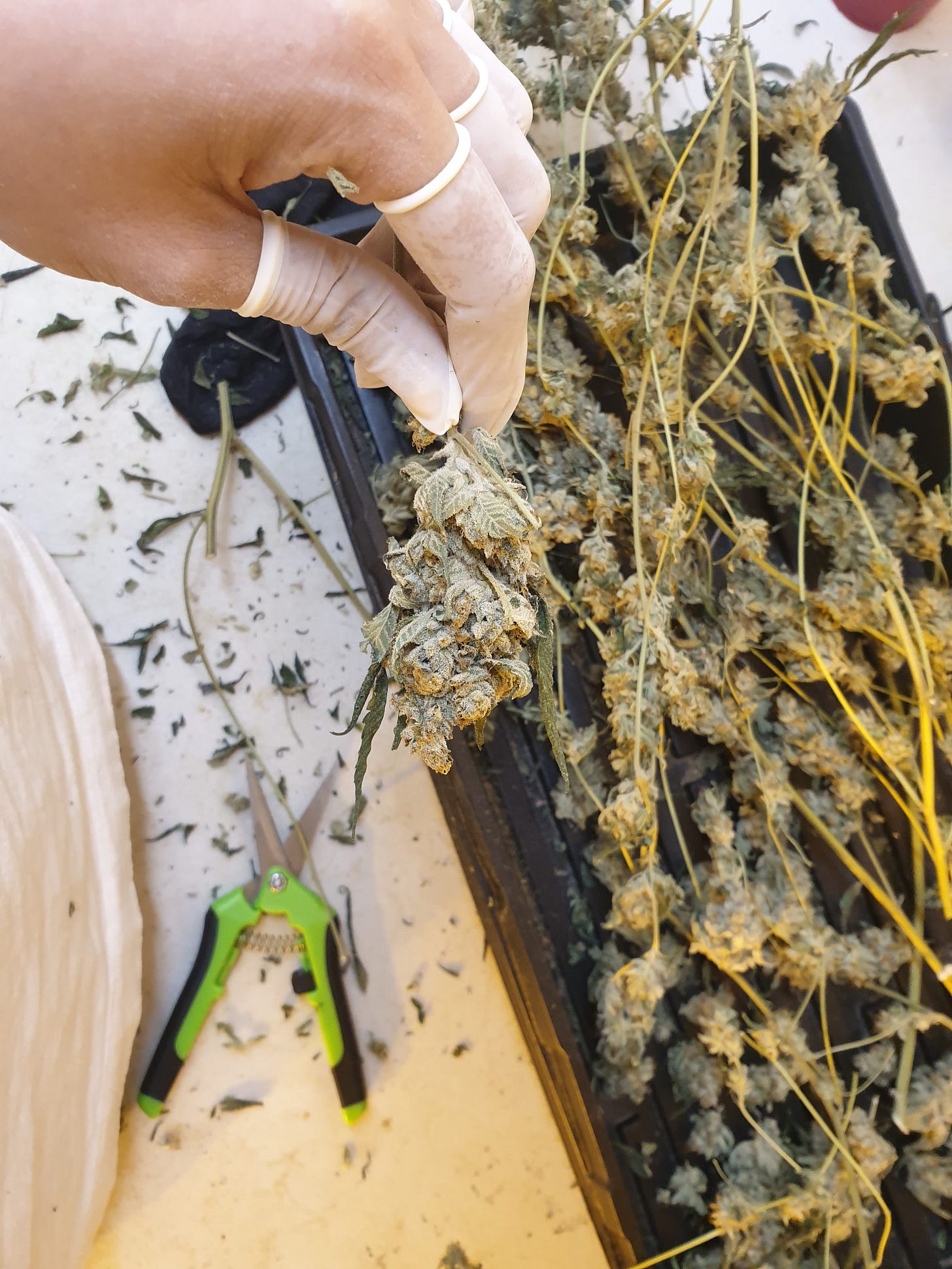IT'S TRIMMING SEASON, BITCH
Inside a secret weed warehouse, a stoner subculture struggles through the pandemic.
Welcome to RAVE NEW WORLD, a newsletter on the intersecting futures of nightlife, drugs, and counterculture. This week, an upcoming reporting trip to the CHOP in Seattle, and an auto-fictional essay-as-exposé on the dying subculture of TRIMMING WEED—a once-lucrative STONER LIFEHACK that is being swallowed by the CANNABIS INDUSTRIAL COMPLEX. Thank you for spreading the word about this newsletter with social media shares, and big hugs to the subs hanging out in Club Sober, which has been pretty lit so far.
LIVE FROM THE CHOP
I’m heading to Seattle today to report from the CHOP—a cop-free zone in Seattle’s Capitol Hill that’s become the heart of America’s intensifying culture wars. My friend Greg Scruggs—a freelance reporter covering the protests in Seattle—hit me up after reading my last ~controversial~ newsletter on PROTESTCHELLA. Greg used to write about raves with me at VICE, and drew a connection between music festival tactics and the protest-party vibes at the CHOP, which is now under threat of shutdown after two shootings last weekend. Here’s a snippet of his voice memo:
This is my first reporting trip for this newsletter, and I’d love to hear what you’d like me to look into. Send me feedback by replying to this email—and if you can, please support this work by upgrading to a paid sub :)
IT’S TRIMMING SEASON BITCH

A friend extends an offer you can’t refuse: wanna get rich quick while surrounded by giant piles of weed? An underground weed grow-op just harvested their latest crop, he says, and the manager needs workers to help prune the plants. 10 days, $175 per pound of trimmed weed, all cash—and if you’re fast, you could wake up in a week to a grand in your pocket, or so he claims. Obviously, you’re intrigued.
“Trimming” is an essential process of the weed production chain most stoners have never heard of. The labor involves beautifying the plant for sale, carefully clipping off its sugary leaves and stalks so that the buds look dank when they land at dealers and dispensaries. An entire Californian subculture has sprouted from the annual exodus to Northern California’s Emerald Triangle—the agricultural region where most of America’s weed is grown—when trimming season starts every summer. Weed farms up North are a notoriously wild frontier—the region is haunted by armed renegades and stories of lone trimmers gone missing. But this trimming job is in a warehouse in LA.
How safe is it? you ask your friend, worried about both cops and coronavirus. He laughs, “Just check it out, and if you don’t like it, don’t come back.” So the next day you ride a ghostly train to the meeting spot. A van picks you up with the rest of the trimmers, and you’re warned to speak in whispers when we arrive at the warehouse, so the neighbors don’t get suspicious. You look around at the crew: one hungover blonde in booty shorts, two streetwear teens, a couple that looks like they’re into metal, vaping skaters from Orange County. Your boss is a middle-aged skater-bro clutching an ice coffee, and everyone greets each other with the chumminess of the first day of school.

The door swings open and you’re hit with a blast of weed’s skunky scent mixed with a sharp chemical acid—a heavy perfume that clings to clothes for weeks. The warehouse is lined with fold-out tables, and the bathrooms are covered in shit-stains. Everyone rushes to their seats as racks of weed are trotted out—crystalline nugs dangling off long stems in a morass of dried blackened leaves and furry orange hairs. The day unfolds as a race against the clock, since wages depend on the weight per pound of weed you trim. The pandemic precautions are frankly a joke. Nobody wears a face mask, and lunch is a shared platter of pizza or tacos. There are no scheduled breaks, and like good gig workers, we’re free to work ourselves to the bone. Market forces even determine the strains we trim—trendy varietals like Cookies and Wedding Cake that drop weighty nugs.
This is back-breaking work, a cross of Japanese bonsai gardening and factory labor. Neck crooked down, shoulders pinching, wrists flicking, you eventually settle into a rhythm meditative in its monotony—a hypnotic place known as the “green dimension.” Some trimmers even bring their own special shears—made in Japan, of course. As you smoke never-ending blunts, you start thinking of yourself as a weed hairdresser.
You hear all kinds of crazy stories at a trimming table: of jobs in the Emerald Triangle with gun-toting meth heads; secret weed mansions hidden behind the gates of rich neighborhoods; warehouses downtown growing shrooms on an industrial scale. You pick up new lingo, like “larfs” (shitty nugs too small to trim), and “noots” (nutrient stacks for growing weed, an entire game in itself). You learn the Trimmer’s Code, a tacit agreement not to cherry-pick the stalks with the biggest nugs for yourself in the name of fairness. The bitter fact is that each pound of weed you’re being paid $200 to trim will be flipped for $2000 to distributors. Trimming rates have been plummeting for years, even as demand for weed grows with the pandemic, and you learn that the hippie trimmer lifestyle—where you could surf in Thailand for a year off a summer of trimming—is fading into myth. Your only revenge is to skim off small nugs to take home, which everyone does, flagrantly.

One day, a crew of a dozen Asian trimmers show up. They accept a lower rate of $115 per pound, and speak to no one but their own manager, who barks orders at them in Chinese. Plowing through the weed faster than anyone else, they do not follow Trimmer’s Code. Other trimmers regard them as outsiders, joking about catching coronavirus. These workers, you’re told, were diverted from their usual jobs at sweatshops, and have become increasingly common in the scene. What about unions, you ask. An old-timer trimmer shakes his head glumly, and envisions a division-of-labor structure, rather than every-trimmer-for-themself. “It’s like eating a shit sandwich,” he says. “It would go so much faster if we all just took one bite, rather than trying to eat it all on our own.”
By the end of the gig, you’ve nearly destroyed your body, but have barely hit minimum wage. Yet, on the last day of work, the warehouse buzzes with chatter of trimming jobs people are heading to next, what new rooms are popping up, how big their nugs will be. Despite the drudging conditions, this work remains a recession-era lifeline, and chasing the illusive bag is still less bleak than bottomless economic uncertainty. So maybe you go home to rest your aching body and do it all over again. Another day, another dollar. If money is the root of evil, maybe you should smoke the whole tree. It’s trimming season, bitch.
QUICK HITS

Why People are Using Ketamine Nasal Spray to Party—I explored the enduring popularity of “k-spray” in the rave scene for my fave femme-run psychedelic magazine (Double Blind)
The Accidental Occupation of Seattle—Greg Scrugg’s magnum opus on the historical context and complex politics of Seattle’s CHOP is a must-read (Bloomberg)
Inside the Social Media Cult That Convinces Young People to Give Up Everything—Emilie Friedlander and Joy Crane’s 10,000-word investigation into DayLife Army, the cum-drinking sober cyber cult that’s been recruiting from the music scene for years, is FUCKING INSANE. (OneZero)
RAVE ALERT

Generation Pride—A summit with cannabis speakers and performers to celebrate the Stonewall anniversary with other queer stoners (June 27)
Just Ship It—A festival fundraiser for the Black Trans Travel Fund, headlined by a sick b2b between Benny Blanco and Cashmere Cat (June 26)
Pride 2020: The Sound of New York—A whole slew of New York rave scene bbs are playing this super-cute Pride party, with funds going to essential queer charities (June 26)


